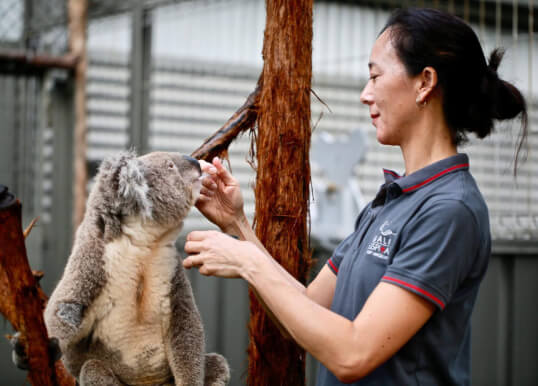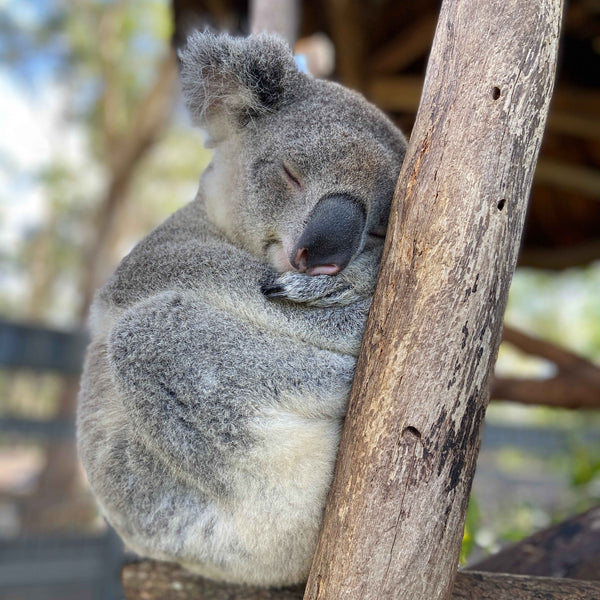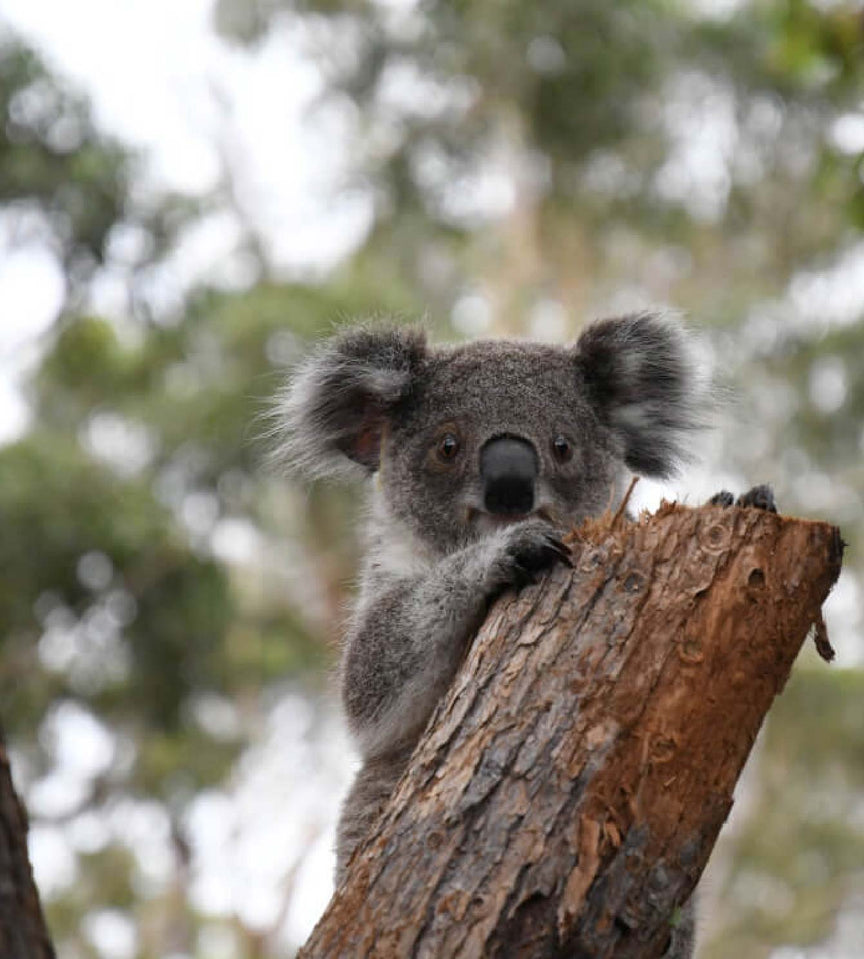Injury and attack

Depending on the speed of travel and which part of the vehicle actually impacts the koala can make a great deal of difference to the level of trauma the koala suffers.
Koala patients that arrive at a care facility alive can exhibit everything from fractured jaws, skulls, brain injury, fractured limbs, fractured spines, internal bleeding to degloving of the skin from being dragged along the road.
Koalas suffering serious traumatic injuries usually require surgery to repair fractures and they require long term intensive care. Even with the best of care, many of them still die.
Some injuries are so severe that keeping koalas alive with the goal “to give them a life, becomes an animal welfare issue and these koalas require immediate euthanasia.
Koalas are a wild animal and we must respect their wildness. Not all is lost though as we do have successful treatments of some motor vehicle impact injuries followed by the release of the koala.
What is the Iceberg Effect?
This is where a koala looks to have suffered only minor injuries, such as one or two small puncture wounds. The casual observer often states “oh he/she looks fine, there was only one tiny wound”. The reality is that internally the koala may for example have crushing pressure injuries from the dog’s canines which cause massive trauma/haemorrhage to internal organs, tissues and muscle as described previously. So the tip of the Iceberg is the tiny external wound and the bulk of the iceberg is the massive trauma internally. This scenario is exactly the same with domestic cats who catch birds, small mammals and reptiles – minimal evidence of trauma on the outside of the body but internally it’s a mess and the majority die.
Post mortem work is critical to both allay the fears of those who feel they have failed in treating the injured koala and to learn what truly goes on internally. It is a very important education tool for those who work with wild koalas.
Nonetheless, all is not lost as most koalas with true minor injuries do indeed respond and are successfully released.


How to prevent dog attacks
- Choose a breed that is less likely to attack wildlife
Plant trees in the front of a yard (not near powerlines) in preference to backyards. - If koala trees are in a backyard – try to fence off where the tree or trees are to keep dogs away. Erect timber runners from the tree to the fence to allow the koala to not have to go down to the ground.
- Koalas often walk along the tops of fences to get from A to B. It is not unusual for a bigger dog to pull the koala off the fence and attack it. Try to house your dog in a fenced area that koalas will not visit.
- If possible lock dogs up at night.
- Always have your dog on lead when out on public land.
- Keep the Koala Hospital or other wildlife agency’s 24 hour emergency number handy and call immediately if your dog attacks a koala no matter what the time.
- Where possible wrap the koala up in a big blanket to keep warm while waiting for responders.
- Do not be fearful you will get “into trouble” – wildlife personnel simply wish to take the koala in for treatment.

